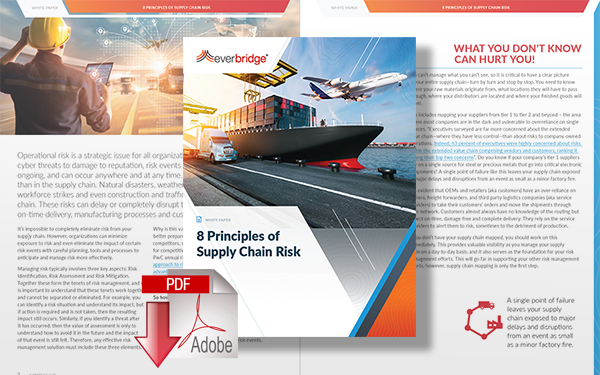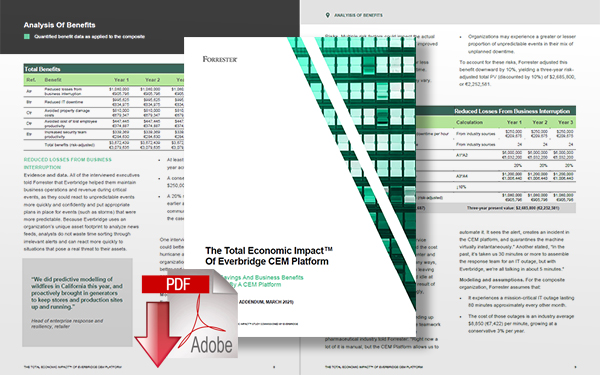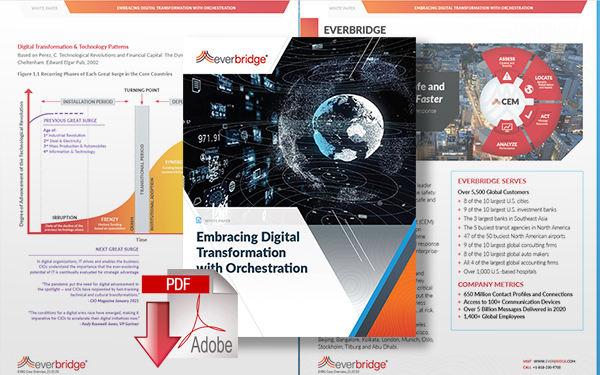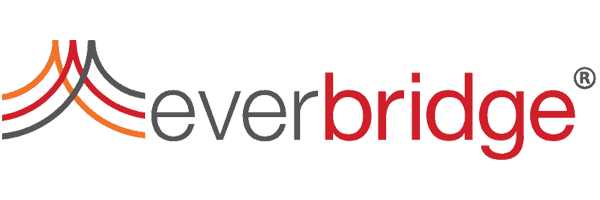3 Fundamental Truths about Supply Chain Disruption & Risk

Once you understand that every decision you make involves some level of risk, and have visibility of that risk and its potential impacts on operations, you’re most of the way towards having a robust risk management strategy.
Fundamentals of Supply Chain Risk Management
Conditions may be shifting, but the fundamentals of supply chain risk management aren’t. Below are three facts that aren’t going to change post-pandemic.
In the wake of the COVID-19 pandemic, supply chain risk management has shot back to the top of many organizations’ agendas.
Rocked by the disruption of 2020, organizations are re-evaluating how they look at and approach risk in the supply chain, and changing strategies to help them become more resilient against the next big unforeseen crisis event.
For many of those organizations, their efforts will involve deep-dive assessments of their categories, supplier portfolios, and processes to surface potential issues, and better understand risk exposure and vulnerabilities across the supply chain.
That’s a great starting point. But at times like this, when big decisions are being made that will impact how risk is managed for years to come, it’s also important to zoom out and remind ourselves of the fundamentals of risk management.
Here are the three fundamental truths about supply chain risk that influence every decision you and your team make. They haven’t changed during the pandemic, and they aren’t set to change any time soon – so it’s well worth understanding the best ways to live with them, and navigate around them.
1. No Decision is Risk-Free
Risk is one of the very few true constants in business. No matter how small, it plays a role in every choice we make. So, when you’re making supplier, logistics, or any other kind of supply chain decision, searching for risk-free options is a fruitless endeavor.
Take a routine procurement decision for example. A new supplier pops up, offering the same kind of product as your current supplier, delivered from the same region, through the same logistics partner, just at a slightly reduced cost. From a procurement perspective, that’s a slam dunk – a clear win that shouldn’t expose you to any additional risk.
But even then, there are risks involved. This new supplier is an unknown – you have no history with them, and don’t know much about their ability to deliver, or what they’re like to work with. To work with them you need to take a leap of faith, and that’s a risk – no matter how strong they appear on paper.
The key point here is that change and risk are inextricably linked to one another. Any change, no matter how small, represents new risk – even if it reduces overall supply chain risk exposure.
That’s something you simply can’t fight against. Instead, procurement and supply chain teams must learn to live with risk. Rather than seeking risk-free paths, they need to reduce it and mitigate against its potential impacts as much as possible.
2. Expanding your Reach Means Increasing Exposure to Risk
Recent events like the COVID-19 pandemic have brought unprecedented disruption to global supply chains. But that’s not just because the events themselves are unprecedented.
For decades, we’ve been building increasingly complex global supply networks, designed to help us source and move goods at the right time, and at the right price. Those supply chains contain a huge number of touchpoints, and for large companies, usually involve partners and suppliers from every corner of the globe.
With a global supply chain comes global risk. When a crisis event happens today, it has far-reaching impacts on businesses right across the globe. What previously may have been an isolated national emergency can quickly spiral into a global supply crisis.
Take the start of the COVID-19 pandemic for example. In the beginning, cases were mostly limited to China, but as soon as China began taking measures to limit its spread, businesses everywhere began feeling the impact. Factories closed, and supply was halted, preventing global businesses from operating as usual long before COVID cases reached significant numbers in their own country.
But that isn’t a warning against building and operating global supply chains. The global supply chain – while complex – is a hugely important asset to modern businesses. It enables production at the cost and speed demanded today, so avoiding them isn’t an option. Instead, the best path forward is to simply be aware of the global risk you’re exposed to.
If decisions can be made to limit risk exposure while still maintaining all of the benefits of a global supply chain, then it’s probably a good idea to do so.
3. Risk is Constant – So Risk Management Must Be Too
As mentioned previously, the risk is constant in all aspects of modern business. It’s constantly evolving and plays a role in every decision made at every level. So, it must be constantly managed and monitored too.
After any major crisis event, teams will naturally want to dive into supply chain data and conduct deep assessments to understand how they can better manage and mitigate risk. That’s a worthwhile activity, but risk management can’t just be based on snapshot assessments.
To mitigate risk and ensure your business is better prepared for the next supply chain crisis, risk management needs to be part of your culture – something that’s considered as every decision is made, not just looked at reflectively every few months.
The risk landscape is constantly shifting, and only by weaving risk management into your day-to-day operations and decision-making processes can you hope to control and contain it.
With Risk, Knowing is Half the Battle
Managing and mitigating supply risk is fundamentally about having relevant and timely insights into the key factors that could disrupt your supply chain – and then acting on the information, either proactively or reactively.
Once you understand that every decision you make involves some level of risk, and have visibility of that risk and its potential impacts on operations, you’re most of the way towards having a robust risk management strategy.
About the Author
Omer Abdullah is a co-founder of the firm and leads The Smart Cube’s business across The Americas. He has more than 25 years of management consulting, global corporate and industry experience across North America, Europe, and Asia.
 HOW TO USE PREDICTIVE INTELLIGENCE AND ANALYTICS
HOW TO USE PREDICTIVE INTELLIGENCE AND ANALYTICS
WEBINAR: On-Demand
Major supply chain breakdowns have spurred an industry-wide awakening that has business continuity and resilience leaders eager for new solutions. So far in 2021 alone, the Suez canal blockage caused global product shortages on numerous critical goods. The February freeze in Texas triggered mass blackouts that led to chemical plant shutdowns, causing a shortage of raw materials needed for products such as medical face shields and smartphones. And continued COVID outbreaks in Taiwan have impeded tech manufacturing worldwide.
Featuring intelligence and risk expert, Shehrina Kamal, join this webinar to learn:
- Top 5 predictions for the second half of 2021, and real-life failures and successes
- Lessons learned from recent interruptions, including ocean capacity challenges and US air cargo congestions
- How to improve supply chain security automation and processes to turn supply chain risk into a competitive advantage
Don't Miss This On-Demand Event VIEW NOW
Related Resources
8 Principles of Supply Chain Risk
In this white paper, we detail 8 principles that are an accumulation of experiences documented to help guide companies as they mature their supply chain risk management program and make changes to proactively respond to and minimize the impact of risk events. Download Now!
The Total Economic Impact™ of Everbridge CEM Platform
This Forrester commissioned Total Economic Impact™ (TEI) study provides readers with a framework to evaluate the potential financial impact of a CEM (Critical Event Management) Platform on their organizations. Download Now!
Embracing Digital Transformation with Orchestration
In this educational white paper, we discuss what makes adopting digital transformation so difficult, and how the first step to answering the question is understanding the top barriers and challenges. Download Now!
More Resources from Everbridge
Article Topics
Everbridge News & Resources
3 Fundamental Truths about Supply Chain Disruption & Risk Using Technology to Protect Against Supply Chain Risk 8 Principles of Supply Chain Risk Protecting the Supply Chain Against Risk Events & Disruption The Total Economic Impact™ of Everbridge CEM Platform Accelerating Digital Transformation for Mitigating Enterprise IT and Cyber Resilience Embracing Digital Transformation with Orchestration More EverbridgeLatest in Supply Chain
A Look at Baltimore’s Key Bridge Collapse—One Month Later European Parliament Passes New Law Requiring Supply Chain Accountability Baltimore Continues Bridge Recovery With Opening of New Channel How Shippers Can Prep for Hurricane Season Apple Accused of Multiple Human Rights Violations South Korea Finally Overtakes China in Goods Exported to U.S. UPS Struggles in First Quarter With Steep Earnings Decline More Supply Chain

















